History
The station was founded in June 1888 by the explorer Ludwig Wolf. It was one of the first permanently inhabited European stations in the interior of West Africa and was located on the 750 meter high Adadoberg. In the years 1889–90 the station was headed by Erich Kling and was the starting point for several expeditions to explore the hinterland and to expand German influence in the area. Kling and his successor Richard Büttner had a palisade fence built for fortification. At that time, the station consisted of nine adobe buildings arranged in a rectangle. The built-up area was 47 by 56 metres (154 by 184 ft). The station was manned by two Germans - the station manager and a mechanic. Outside the palisades were agricultural areas on which cultivation trials with European crops and tropical crops were carried out. Around 1900 a cola and coffee plantation was still in operation.
The Imperial Commissariat under Jesko von Puttkamer was skeptical of the station due to its remoteness and economic inefficiency. Instead of directing trade to the coast of German Togo, it strengthened the existing connections to the British Gold Coast. As early as 30 June 1894, the status as a European station was revoked. Between 1888 and 1897, a weather station of the Deutsche Seewarte [ de ] was active in Bismarckburg. The colonial station was still under the control of a German district manager in Kete Krachi as a secondary station until 1914. It remained economically important as African traders came to the area to buy rubber.

German literature comprises those literary texts written in the German language. This includes literature written in Germany, Austria, the German parts of Switzerland and Belgium, Liechtenstein, Luxembourg, South Tyrol in Italy and to a lesser extent works of the German diaspora. German literature of the modern period is mostly in Standard German, but there are some currents of literature influenced to a greater or lesser degree by dialects.
Silesian, Silesian German or Lower Silesian is a nearly extinct German dialect spoken in Silesia. It is part of the East Central German language area with some West Slavic and Lechitic influences. Silesian German emerged as the result of Late Medieval German migration to Silesia, which had been inhabited by Lechitic or West Slavic peoples in the Early Middle Ages.
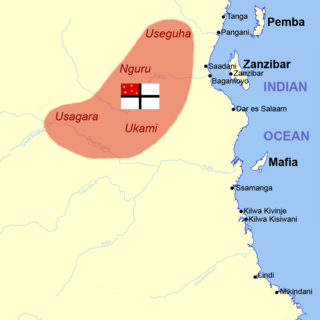
The Society for German Colonization was founded on 28 March 1884 in Berlin by Carl Peters. Its goal was to accumulate capital for the acquisition of German colonial territories in overseas countries.
The National Prize of the German Democratic Republic (East Germany) (German: Nationalpreis der Deutschen Demokratischen Republik) was an award of the German Democratic Republic (GDR) given out in three different classes for scientific, artistic, and other meritorious achievement. With scientific achievements, it was often given to entire research groups rather than individual scientists.

German West Africa (Deutsch-Westafrika) was an informal designation for the areas in West Africa that were part of the German Colonial Empire between 1884 and 1919. The term was normally used for the territories of Cameroon and Togo. German West Africa was not an administrative unit. However, in trade and in the vernacular the term was sometimes in use.
Kasanga, known as Bismarckburg during the German colonial rule, is a town in Rukwa Region, Tanzania. It is located at around 8°27′30″S31°8′10″E, on the shore of Lake Tanganyika, 810 m above sea level.
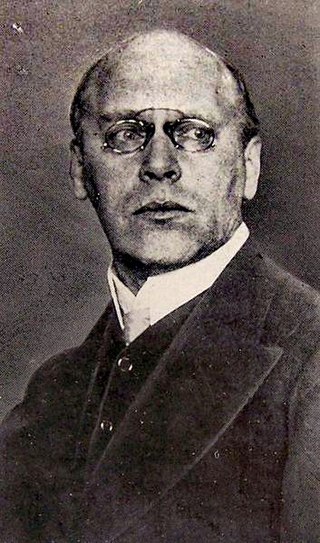
Ludwig von Hofmann was a German painter, graphic artist and designer. He worked in a combination of the Art Nouveau and Symbolist styles. His work was part of the painting event in the art competition at the 1928 Summer Olympics.
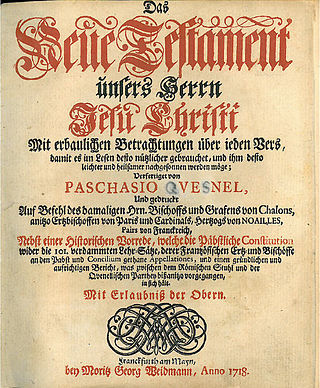
Weidmannsche Buchhandlung is a German book publisher established in 1680 that remained independent until it was acquired by Verlag Georg Olms in 1983.
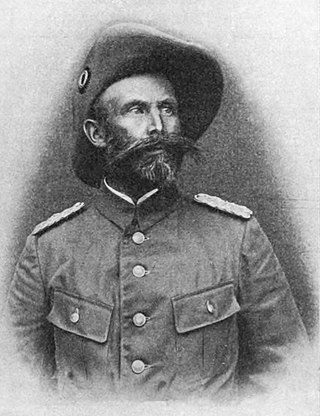
Ludwig Gustav Adolf von Estorff was a German military officer who notably served as a Schutztruppe commander in Africa; and later as an Imperial German Army general in World War I. He also was a recipient of the Pour le Merite, Germany's highest military award.

Gaston Thierry was a German officer and civil servant in Togo and Cameroon.
Oskar Alexander Richard Büttner was a German botanist and mineralogist who was involved in the exploration of the Congo Basin.
Heinz Ludwig Arnold was a German literary journalist and publisher. He was also a leading advocate for contemporary literature.
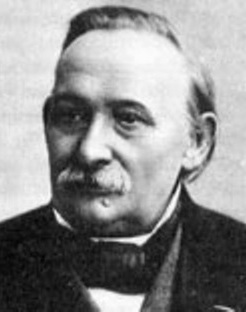
Franz Theodor Magnus Böhme was a German academic, musicologist, composer, folksong collector and writer on music history and folksong.
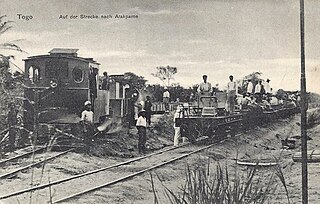
The Lomé–Blitta railway was the third railway line built in today's Togo. It was also called Hinterlandbahn or Baumwoll-Bahn.
Jost Raba was a German violinist and music educator.
Walther Killy was a German literary scholar who specialised in poetry, especially that of Friedrich Hölderlin and Georg Trakl. He taught at the Free University of Berlin, the Georg-August-Universität Göttingen, as founding rector of the University of Bremen, as visiting scholar at the University of California and Harvard University, and at the University of Bern. He became known as editor of literary encyclopedias, the Killy Literaturlexikon and the Deutsche Biographische Enzyklopädie.
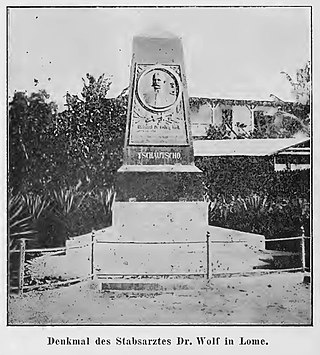
Heinrich Ludwig Wolf was a German doctor and anthropologist.

Franz Anton Ritter von Gerstner was a German-Bohemian civil engineer, professor and railway pioneer.

Hans-Georg Wilhelm von Doering was a German officer and the last colonial governor of German Togoland before surrendering the position during the Togoland campaign of the African theatre of World War I.

Wilhelm Ludwig Erich Felix von Tschischwitz was a German General of the Infantry who participated in World War I. He was part of the Imperial German General Staff during the German spring offensive as well as commanding the Reichswehr after the war concluded.
This page is based on this
Wikipedia article Text is available under the
CC BY-SA 4.0 license; additional terms may apply.
Images, videos and audio are available under their respective licenses.















